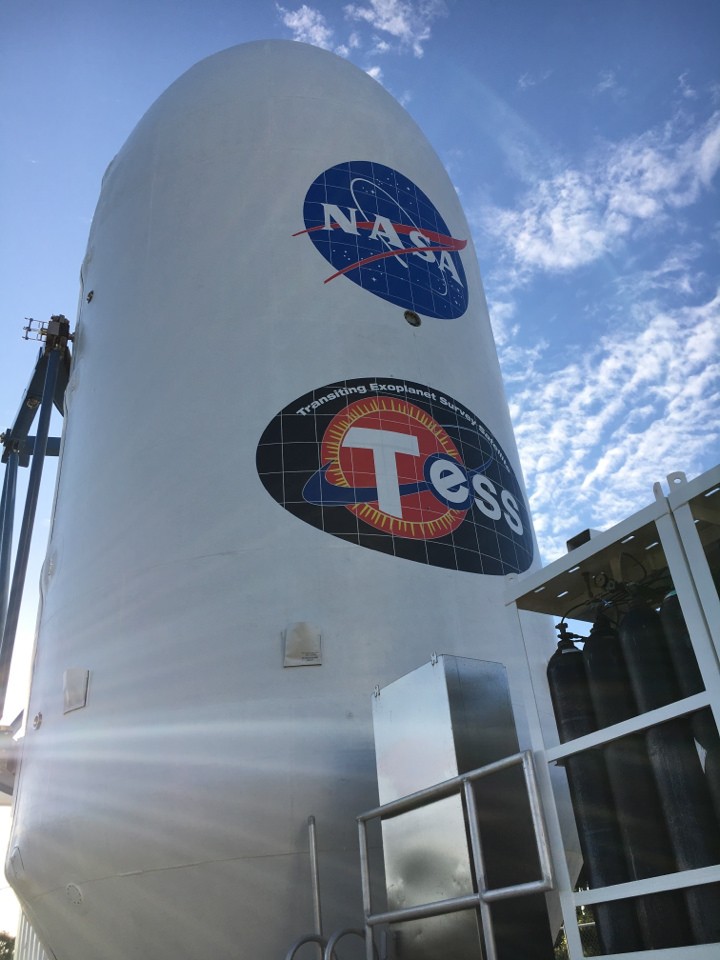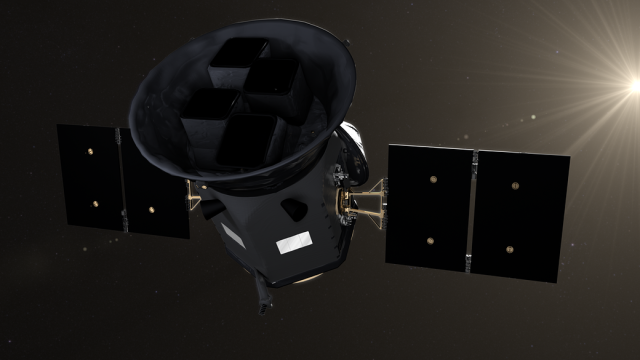NASA’s TESS, or the Transiting Exoplanet Survey Satellite, will launch on Tuesday aboard a SpaceX Falcon 9 rocket from Cape Canaveral, Florida, if everything goes to plan. People are excited.
Illustration of TESS. Photo: NASA
The first confirmed planets outside of our own solar system were only discovered around 25 years ago. Since then, missions including Kepler and K2 have found thousands of exoplanets and exoplanet candidates.
But many of these were too far away to detail, and the Kepler/K2 mission is slated to end in the next few months, as the Kepler spacecraft will soon run out of fuel. The TESS telescope will be able to pick up where Kepler left off, cataloguing a lot of planets around closer stars for followup study.
“Once the TESS survey is done, we’ll have a catalogue of some (but not all) of the nearest worlds beyond our solar system,” Harvard astrophysicist Jonathan McDowell said in a tweet. “Later telescopes such as James Webb can then study them in detail.”

The telescope is small, as NASA scientist Jessie Christiansen points out – roughly the size of a little sports car with its solar panels extended, but only a third the weight. It will sweep the sky with its four cameras, looking for planets around the 200,000 stars in the closest 300 light-years around Earth. Like Kepler, it will watch for planets passing in front of the stars they orbit, producing a telltale dimming and brightening effect.
Additionally, astronomers are especially interested in looking for planets around a kind of star you’ve probably heard a lot about recently: Red dwarfs. Our dim neighbour Proxima Centauri is such a star, and potentially has a planet in its habitable zone, the place where conditions are ripe for liquid water to exist. So is TRAPPIST-1, which may host two potentially habitable worlds.
Ultimately, the question everyone has is, “Is there an Earth 2.0 out there?” TESS won’t answer that question. Instead, it will give scientists a list of candidates to look more closely at with the James Webb Space Telescope, a long-delayed project currently slated to launch in 2020. Future telescopes such as proposed LUVOIR or HabEx might be required to actually spot signatures of life, such as how alien life forms change the composition of their planet’s atmosphere.
Everything appears to be ready for Tuesday’s launch, and SpaceX reported that the rocket has successfully performed its static fire test.
We’ll be keeping our eyes on the launch and keeping you updated on how things go.
